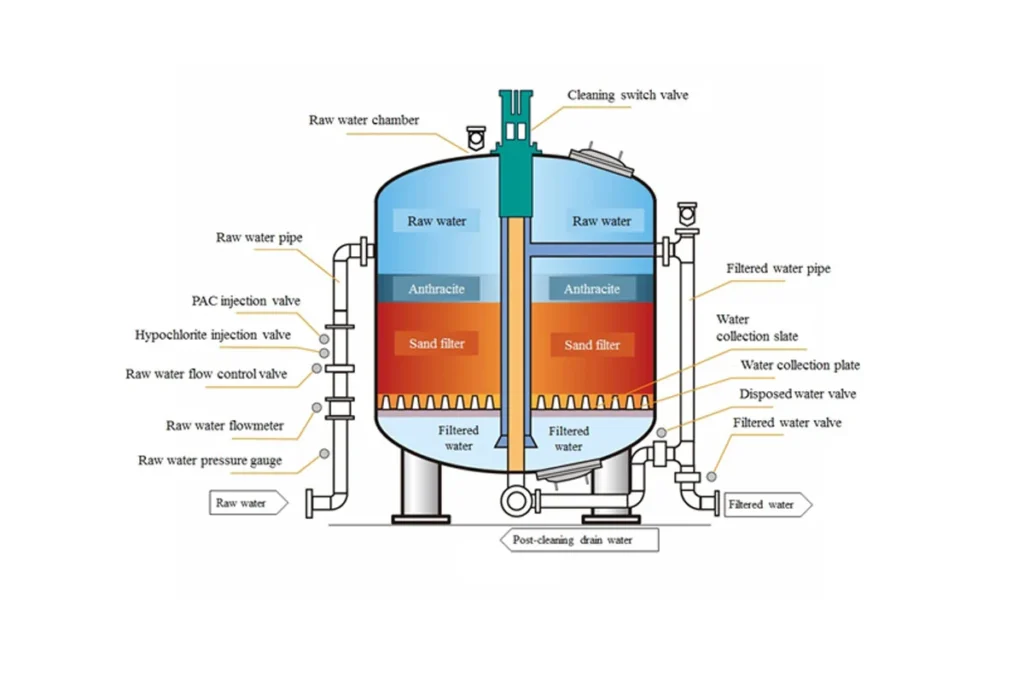
Activated Carbon Filters (ACF)

Activated carbon (AC) is similar to ion exchange resin in density and porosity. It adsorbs many dissolved organics and eliminates chlorine or other halogens in water. It does not remove salts. AC filters are one of the only low-cost methods available to remove low-molecular weight (<100 MW) organics and chlorine.
Granular activated carbon is made from raw organic materials (such as coconut shells or coal) that are high in carbon. Heat, in the absence of oxygen, is used to increase (activate) the surface area of the carbon; this is why these filters are sometimes referred to as “charcoal” filters. The activated carbon removes certain chemicals that are dissolved in water passing through a filter containing GAC by trapping (adsorbing) the chemical in the GAC.
Activated Carbon (AC) filtration, as with any water treatment method, is not capable of removing every possible type of contaminant. For example, sodium, microbes, fluoride, and nitrates cannot be removed with AC filtration. Water softening also cannot be achieved with AC filters. In addition, heavy metals, such as lead, can only be removed with a very specific kind of activated carbon water treatment, which is typically used only in residential point-of-use filters.
How it Works
Chlorine Removal: Activated carbon may be used to remove chlorine with little degradation or damage to the carbon. Dechlorination occurs rapidly and flow rates are typically high. However, this process requires an extensive amount of surface area, and organics in the water will eventually fill up and block the pores of the carbon. Ultimately, the activated carbon filter will need to be replaced as its ability to dechlorinate the water will slowly decline. Spent carbon can be re-activated; however, re-activated filters should only be used in waste-water treatment applications. One advantage to using AC is its low operating cost and virtual “fail safe” operation once installed. One disadvantage is that as the chlorine is removed from the topmost layer of the media, the AC provides a damp environment ideal for the growth and proliferation of bacteria. Bacteria can cause problems in medical applications, or when using carbon as a pretreatment to reverse osmosis.
Removal of Organic Matter: As water passes through an activated carbon filter, organic particles and chemicals are trapped inside through a process known “adsorption”. The adsorption process depends upon 5 key factors: 1) physical properties of the activated carbon (surface area and pore size distribution); 2) the chemical makeup of the carbon source (amount of hydrogen and oxygen); 3) the chemical makeup and concentration of the contaminant; 4) water pH and temperature; and 5) the length of time the water is exposed to the activated carbon filter (called empty bed contact time or EBCT). WhatsApp

